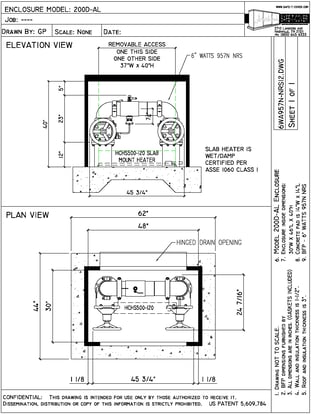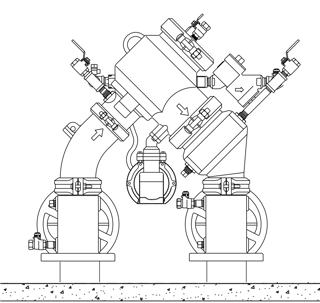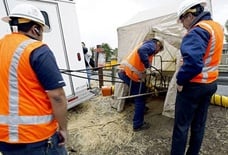
Water utility management has many successes and roadblocks. Through our standard detail program, we've formed relationships with various water districts and their staff. Safe-T-Cover works with the water directors, public works directors, cross-connection control managers, and others to update their standard details for free. We've been offering this for a couple of years now. In doing this, we've learned a bit about how the water utility management for cities and counties of all sizes do business. We see their strengths and their weaknesses, we help where we can, and everyone keeps working toward a clean and perfect water system. Most people aren't aware of the problems and roadblocks these officials face while keeping their users safe and healthy. Here are some of the ways in which progress can be stunted in our public water systems, and what some municipalities are doing to avoid them.
Budget FOR WATER UTILITY MANAGEMENT
Unfortunately, water departments aren't exactly well funded. They typically have to make quite a lot happen with small budgets and tiny teams. In case you missed Chris Mayhew's blog post on utility vaults, here's what he had to say about how much some water municipalities have to work with, "You would think that the water jurisdictions would have a backflow prevention team and budget big enough to practically guarantee the safety of our drinking water. That's not the case. In one district I work in, there are over 40,000 devices but only two people in the office to oversee them." Safe-T-Cover started working with a water system in Washington state on creating new standard details. Unfortunately, the district just didn't have the manpower to continue that work. While the staff wanted to get their standards updated to the latest best practices, they simply didn't have the time and the effort was ended. This is a common problem throughout the country in districts both large and small. The way most staff get around this is to take on any job necessary, no matter how small, to get their jobs done. This allows them to get things done even with such a small team.
The BACKGROUND YOU WANT YOUR WATER UTILITY
MANAGEMENT TO HAVE
If the water manager has a civil engineering background, they are likely to be more knowledgeable about the public side of the water system. If they come from a mechanical engineer or plumbing background, they'll be more familiar with the IPC or UPC and therefore have more knowledge of indoor plumbing. Their way of thinking is that if each building does a good enough job inside, everything will run smoothly outside as well. The problem is that the buildings get altered, uses change, and if the indoor plumbing develops an issue, that will affect the public water supply. The municipality's obligation is to the public water supply, not to the interior side. The water manager must keep the priority on the public side of things.
While water utility management staff typically have a background in engineering, others that must be involved in the process of managing the system often won't. For the past few decades, city managers most often have a degree in administration instead of in engineering. These varying educational backgrounds can be helpful in day to day management. The problem arises when new projects come along. For instance, administrators may not see the need to change the status quo. Likewise, mechanical and civil engineers may argue about the best way to keep the public safe.
Backflow Prevention
Each additional backflow preventer causes strain on the public water supply. This is especially true in certain districts where the piping is old and must be lengthened and spread out to keep up with expanding cities. There's only so much available water pressure in these situations to begin with, and each backflow preventer lowers it. This is the case in Houston and Corpus Christi due to the low available pressure in their transition lines — the lines that run from one end of the city to the other. Unless they were to replace 50+ miles of piping with larger pipes, this is near impossible to fix.
You'll also see these problems in cities with a lot of hills. Some municipalities have had to remove existing backflow preventers to maintain the water pressure needed. Additionally, customers don't always know the purpose of water utility management policies. The first priority of the water district is to keep the drinking water clean. However, politics and the general public can get in the way of this. Customers become unhappy when they are required to install or move backflow preventers. They will also complain about low water pressure. Water utility management is about finding balance between keeping people safe and happy so it can continue to do its job.
BUREAUCRACY
The organization of city and county water districts is complicated. In most, there will be a water manager, a public works manager that also deals with water utility management, and many have a cross connection department. They all work together with the city council, the city manager, and building inspectors. If someone in the water department - from water resources, to manager, to cross connection control manager - wants to alter anything, there is a long list of people that have to sign off on it. This is every change regarding standard details and what's an acceptable installation. It's taken years to get updated standard details approved by all parties, and during that time, some have to start over in the process because someone retires or gets moved around, or the water manager is replaced with someone new. Additionally, standard details alone have so many moving pieces that have to be considered. For instance, backflow preventers in utility vaults have different clearance requirements than those inside or in enclosures. The text on standard details may need to be all uppercase or all lowercase depending on the municipal code being followed. The wording has to be just right. Staff has to learn how to move through these processes to get things done. Arlington, TX is an example of a water district that has been successful in this.
Support Your Public Water System
We all need clean drinking water. It's a simple fact that we don't think anyone will try to deny. The problem is, that's difficult to achieve even in such a great country as the United States. With all these roadblocks keeping us from fast progress, it's a wonder we see much improvement at all. We want to make it clear that we support the staff at our water districts, and would like to encourage everyone to do so. When your water municipality asks for the money to keep you safe and healthy, give it to them. When a water engineer tries to improve the district's practices, sign off on it. When your plans are rejected because they aren't following current best practices, update them to comply. It's a tough job they're doing and they deserve our help to maintain our water supply and keep it safe.




